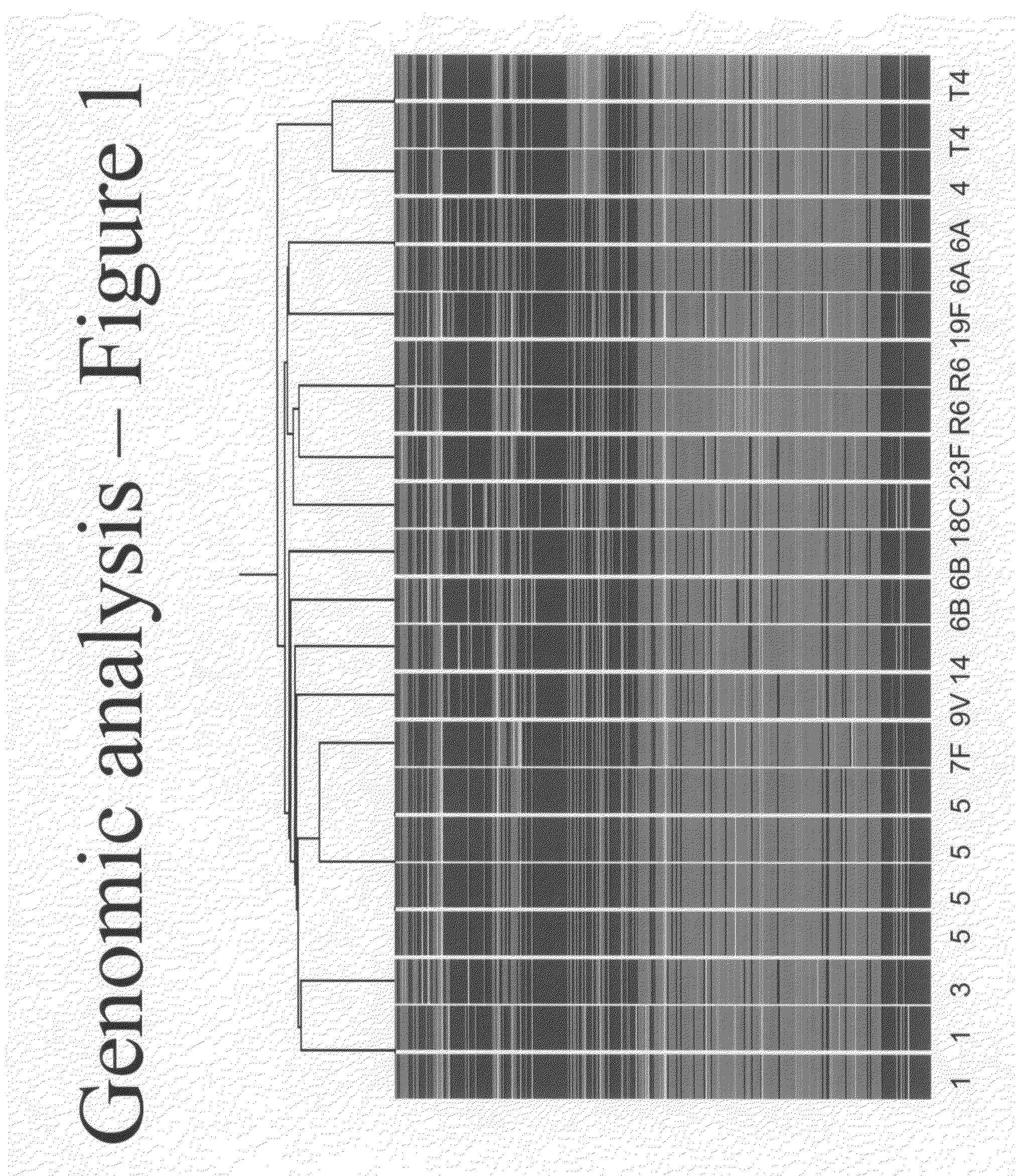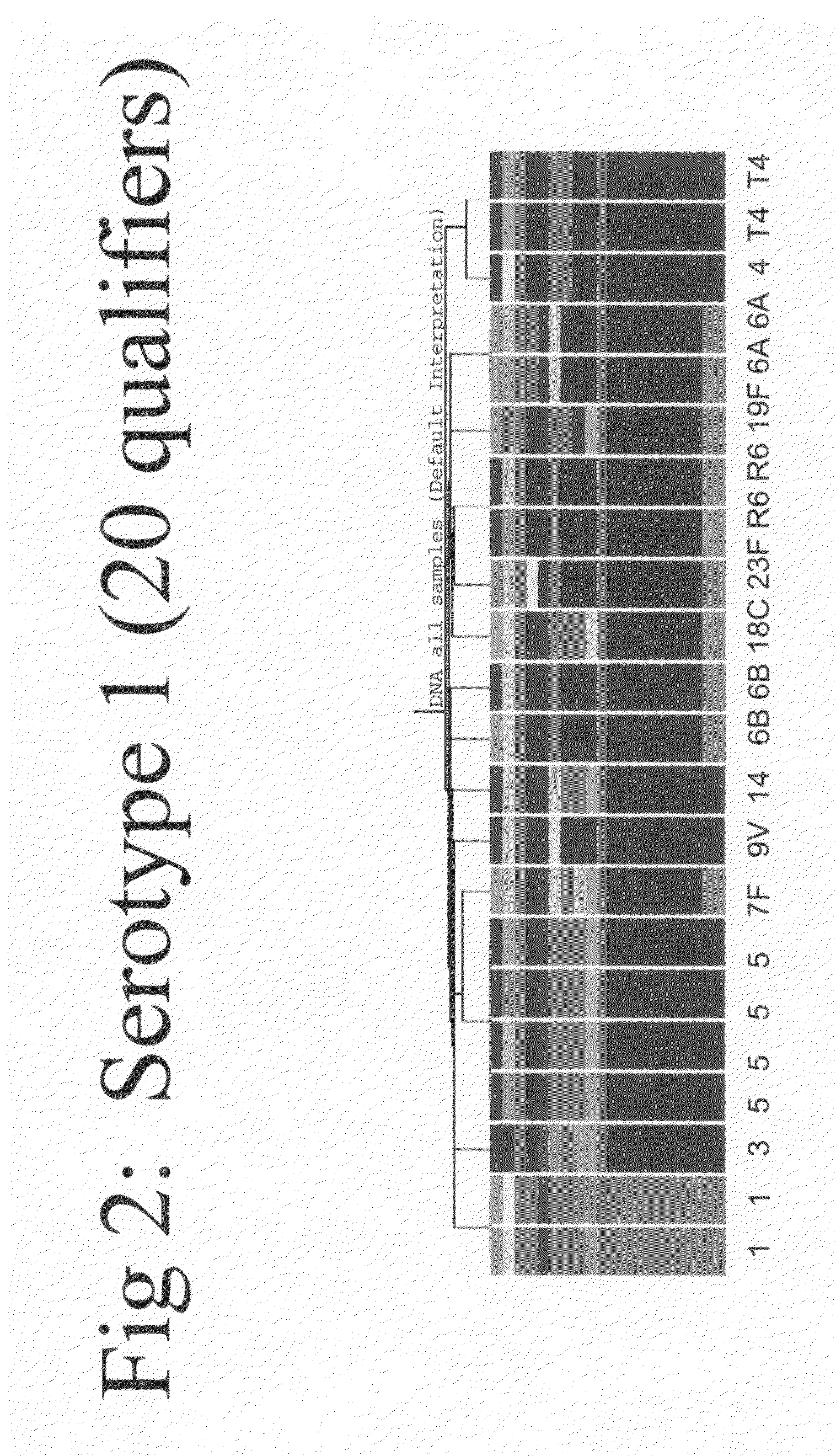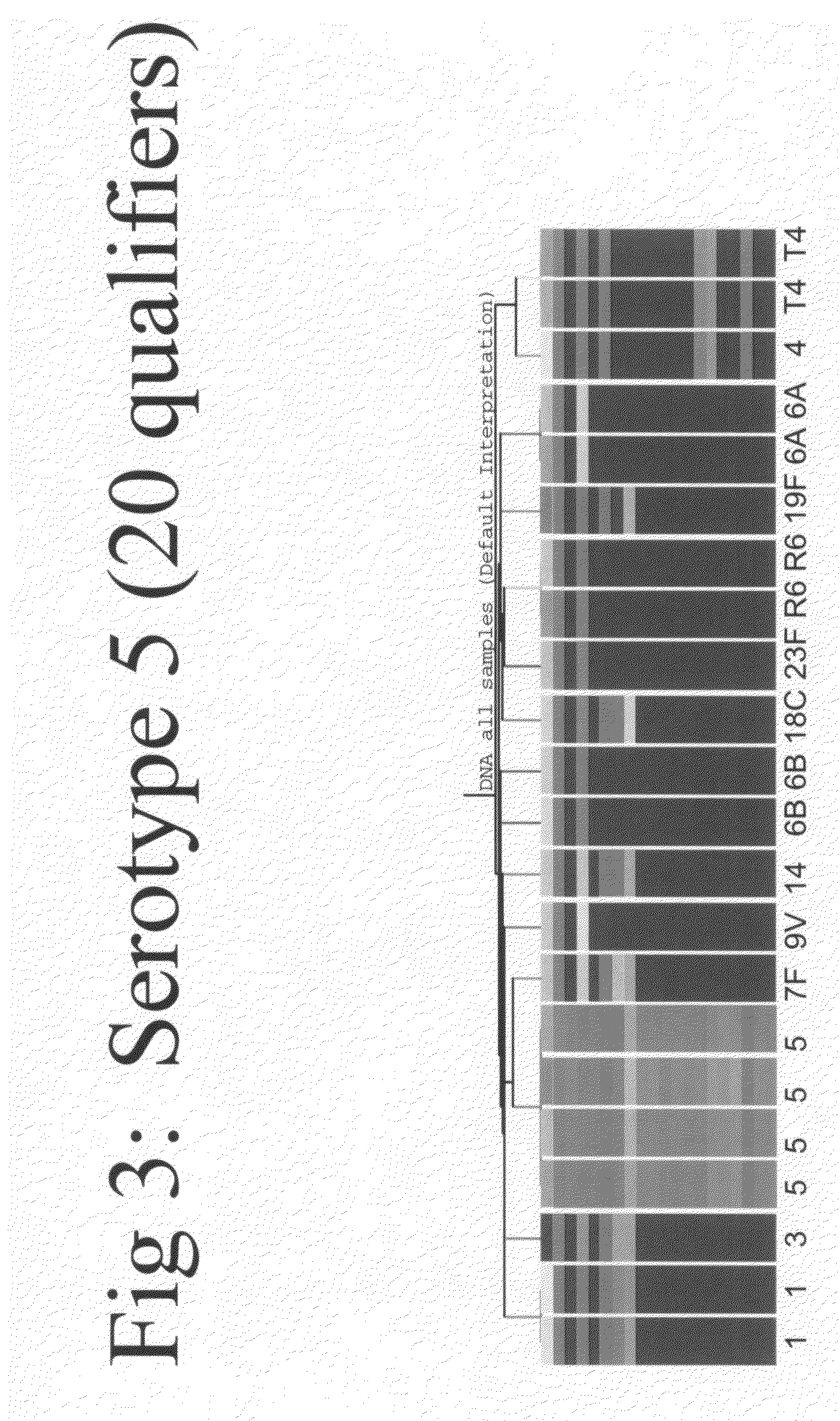Microarray for monitoring gene expression in multiple strains of Streptococcus pneumoniae
a technology of streptococcus pneumoniae and microarrays, applied in the field of nucleic acid arrays, can solve the problems of inability to discriminately detect multiple strains i>streptococcus pneumoniae /i>has developed resistance to most antibiotics, and the treatment of i>streptococcus pneumoniae /i>
- Summary
- Abstract
- Description
- Claims
- Application Information
AI Technical Summary
Benefits of technology
Problems solved by technology
Method used
Image
Examples
example 1
Nucleic Acid Array
[0102]The parent sequences depicted in SEQ ID NOs: 1-7924 were used for probe selection using a probe selection algorithm developed by Affymetrix® (Mei R. et al. (2003) “Probe selection for high-density oligonucleotide arrays,”PNAS U.S.A., 100(20):11237-42, the teachings of which are hereby incorporated by reference). Probes with 25 non-ambiguous bases were selected. Thirty-four (34) probe-pairs were requested for each submitted ORF sequence with a minimum number of acceptable probe-pairs set to three. All intergenic sequences derived from the finished genomes based on the public ORF coordinates and greater than 50 bases in length were also submitted for probe selection. A maximal set of 12-15 probes were chosen for each submitted intergenic sequence. The final set of selected probes is depicted in SEQ ID NOs: 7925-254,193. These probes are perfect match probes. The perfect mismatch probe for each perfect match probe was also prepared. The perfect mismatch probe is...
example 2
Assessing Genomic Relatedness of Different Serotypes
[0103]The Spneumo1 array was utilized to assess genomic relatedness of one or more representatives of some of the serotypes present in 13-valent pneumococcus vaccine as well as control strains for which the complete genome sequence has been determined (e.g., TIGR 4, labeled “T4” in the figures, and R6). The two control strains were obtained from ATCC and the remainder are from Wyeth's strain collection. DNA was extracted, labeled and hybridized to the array using standard methods known in the art. See, e.g., Dunman et al. (2004), “Uses of Staphylococcus aureus GeneChips® in Genotyping and Genetic Composition Analysis,”J. Clin. Microbiology, 42:4275-4283, the teachings of which are hereby incorporated by reference.
[0104]The dendrogram-heat map as shown in FIG. 1 shows DNA similarity between isolates, calculated using correlation methods using log-normalized signals for qualifiers representing ORFS. Each column represents one strain;...
example 3
Serotyping Isolates
[0106]FIGS. 2-7 show that the array of the invention may be used to aid in serotyping isolates, particularly, based on the DNA content of their capsule operons. The heat maps illustrated in FIGS. 2-7 show only those qualifiers predicted to be present in the capsule operons of these selected serotypes. Predictions are based on a comparison of the oligonucleotide probes used on the array and the DNA sequence of each capsule operon. A predicted Present call is made if 70% of the qualifier's probes match the sequence of the capsule operon. In each case, all or most of the qualifiers predicted to be present for a given serotype produce a hybridization signal on the array. It can be seen that some genes are shared by multiple serotypes, while others are unique to a single serotype or shared between closely related serotypes (e.g., serotypes 6A & 6B, FIG. 7).
PUM
| Property | Measurement | Unit |
|---|---|---|
| Temperature | aaaaa | aaaaa |
| Temperature | aaaaa | aaaaa |
| Temperature | aaaaa | aaaaa |
Abstract
Description
Claims
Application Information
 Login to View More
Login to View More - R&D
- Intellectual Property
- Life Sciences
- Materials
- Tech Scout
- Unparalleled Data Quality
- Higher Quality Content
- 60% Fewer Hallucinations
Browse by: Latest US Patents, China's latest patents, Technical Efficacy Thesaurus, Application Domain, Technology Topic, Popular Technical Reports.
© 2025 PatSnap. All rights reserved.Legal|Privacy policy|Modern Slavery Act Transparency Statement|Sitemap|About US| Contact US: help@patsnap.com



